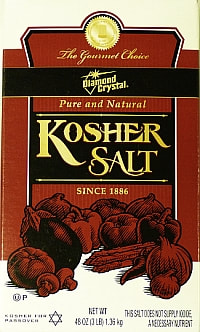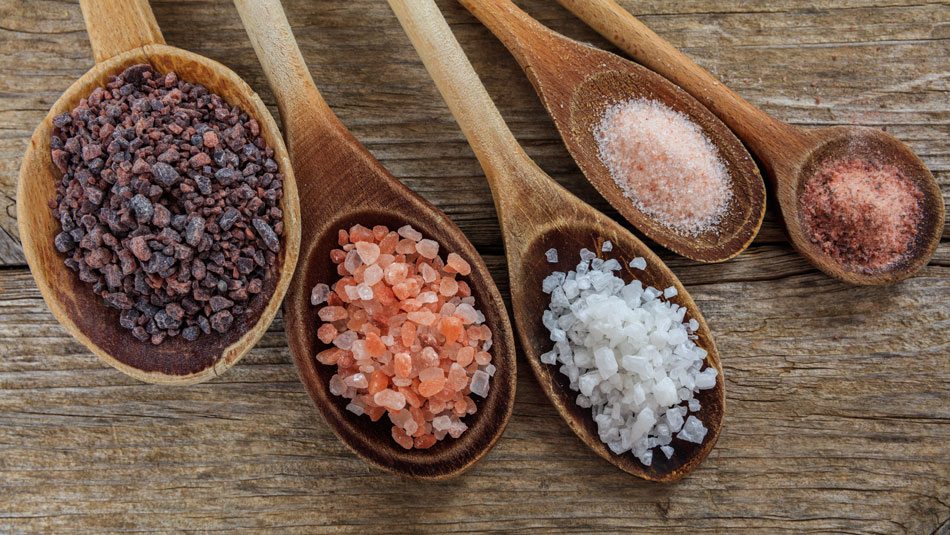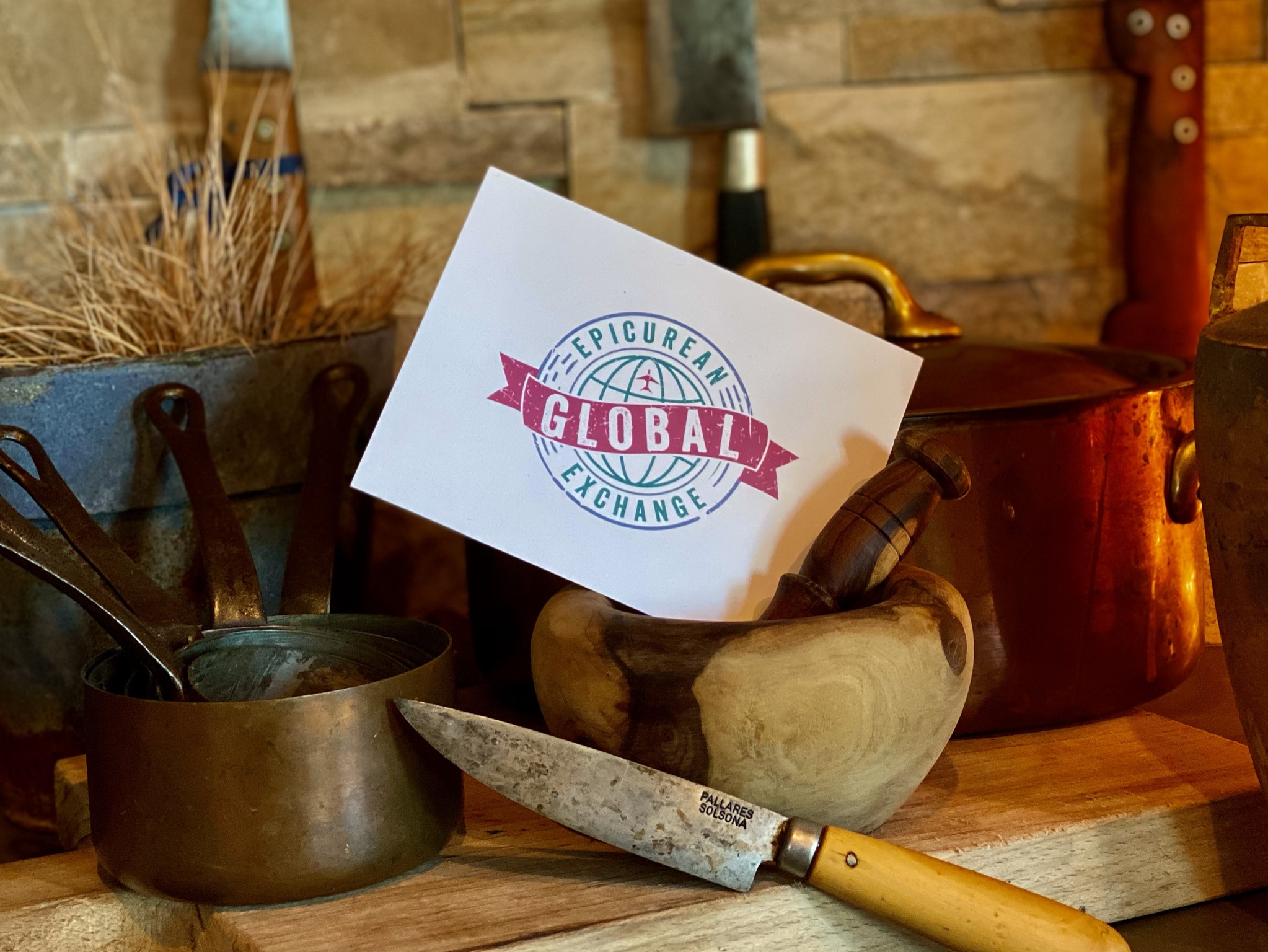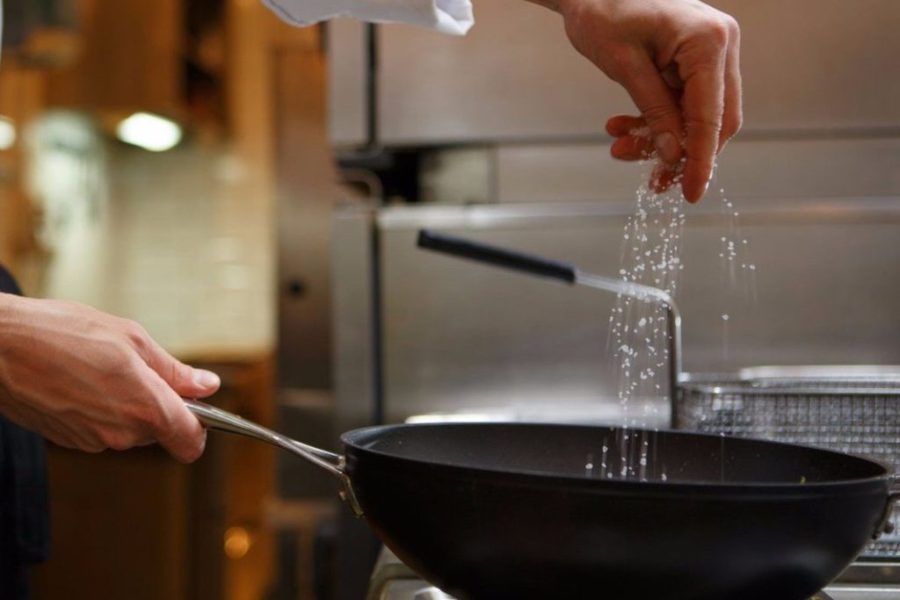Reexamine the notion of salt as a nutritional bad boy: “If you think about salt as a distinctive ingredient, you’ll use it in a purposeful way.” – Mark Bitterman, from his book, Salted.
I have cooked professionally for over 20 years; and, yes, as a chef, I have preferences regarding salt use; types of salts; how I use them, and how much. Anyone who has cooked with me knows that I regard salt as essential component of cooking and I salt appropriately to create flavor, depth and balance. I use salts to enhance hidden flavors and essences, balance acidity, and create length and finish (just as you would expect in a fine wine). Do not under-estimate the important use of salt in cooking – it matters, A LOT!
Here are the common salts and how when (and not) to use them:
Table Salt: Otherwise known as iodized salt – common brand: Morton’s. This salt is highly refined, concentrated (too finely ground), making it overly salty (and therefore you are more apt to over-season). It also has a chemical – metallic after-taste. Yes, it is iodized, but we can derive this mineral from other foods. Don’t rely on salt as your source of iodine; this was important in the 1920’s, but issues of low-iodine (Goiter) have stabilized over the years. It only takes 1/2 teaspoon of iodized salt to receive the minimum recommended level. Ocean-caught or ocean-farmed fish and shellfish tend to be naturally rich in iodine. Other good sources include milk, cheese, yogurt, eggs, and vegetables grown in iodine-rich soil.
Recommendation: Toss it…now!

Note: Morton’s Kosher Salt is not the same as the recommended brand, Diamond Crystal.
Kosher Salt: Recommended brand, Diamond Crystal. For years, professional chefs have acclaimed this world-class salt for savory cooking. Renowned for its distinctive, coarse texture, the natural flake crystals it can be crumbled between fingertips for perfect, controlled seasoning. It offers great adherence, sticking easily to food, is additive-free, and, has excellent blendability, consistency, and a natural burst of flavor. Harvested from dried sea beds, Diamond Crystal kosher salt is inexpensive (about $3.79 for a 3 lb. box at most supermarkets), pure, consistent, reliable and seasons foods perfectly.
Recommendation: Use this for all your savory cooking needs.
Choose a decorative bowl to place stove side to hold your Diamond Crystal kosher salt for easy access and use, as it doesn’t work in traditional salt shakers – the holes are too small. Place on your dining table so guests can add a little pinch, if necessary. Note: Do not use for baking. Because the kosher salt granules are larger, there is more air space between them, and therefore it doesn’t measure accurately in a measuring spoon (for baking, we recommend a fine sea salt – see description below).
Baking Salt: For baking, you need a salt that measures accurately (with a measuring spoon or by weight) and has excellent blendability and consistency. Recommended type and brand: Baleine Fine Sea Salt. “Naturally crystallized by sun and sea breezes in the exclusive, protected Mediterranean Preserve of Aigues-Mortes on the coast of France. Sea salt crystals are ground to a fine texture like table salt so they are ready for any baking recipe.”
Recommendation: Use this for all your baking needs.
Finishing Salts: These salts are meant to be sprinkled on at the end of the dish: on a grilled steak, a fresh tomato, green salads, a chocolate chip cookie or as a finish to caramel sauce. These salts can be course or light, have a slight or hearty crunch, and offer the right amount of flavor and texture for a delicious burst to finish an appropriate dish. There are a multitude of finishing salts from a variety of sources and countries (i.e. Himalayan, Celtic, Fleur de Sel, Kala Namak, and Hawaiian). These salts are harvested from caves, the sea, and mountain tops and each has its own flavor, texture and use.

My Preferred Finishing Salt: Fleur de Sel. Literally “flower of salt,” Fleur de Sel is a sea salt hand-harvested from tidal pools off the coast of Brittany, France. Paper-thin salt crystals are delicately drawn from the water’s surface, much like cream is taken from milk. Fleur de Sel retains moisture, and has blue-grey tint, from its high mineral content and oceanic beginnings. Fleur de Sel adds an impressive dash of flavor to meat, seafood, vegetables, salads, and even sweets like chocolate and caramel. For my taste and purpose, I narrow it to one brand for general finishing: Le Saunier de Camargue. This premium French sea salt comes from the salt marshes of Camargue, a natural region located South of France, between the Mediterranean Sea and the two arms of the Rhône River delta. It is harvested in the traditional manner and contains no additives. Rich in minerals and lower in sodium than regular salt, it is a Chef’s delight. Try it on fresh tomatoes, caramel or chocolate for a taste experience that is truly exceptional! Recommendation: Buy this right away; spend the money here, unless you are planning to travel to Provence in the very near future. This brand of salt can be purchased at supermarkets in Southern France for 1.97 euros; at the touristy French famer’s markets for 6.00 euros, or at your neighborhood Safeway for $14.00. It’s worth it.







